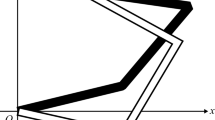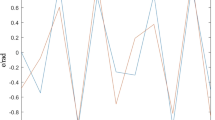Abstract
The rapid development of artificial intelligence technology makes Robotics more intelligent and flexible. In this context, the kinematics inverse algorithm of the Robotics has become the basis and key technology for the further development of the Robotics. The key point of the inverse algorithm of the Robotics is to coordinate the Robotics operation arm with the corresponding action actuator at the end to realize the space attitude control of the Robotics system, and to make a theoretical basis for the motion analysis of the later Robotics. However, the traditional form of Robotics kinematics inverse algorithm avoids a lot of iterative computational solution process, which increases the complexity of the whole algorithm. Therefore, based on the above situation, this paper proposes a Robotics inverse solution algorithm based on improved BP (back propagation) neural network. In this paper, in the application of the actual algorithm, aiming at the convergence problem of the traditional BP neural network algorithm, an improved BP neural network algorithm based on the excitation function is proposed. By selecting the adaptive processing function in each layer of the neural network, the selection is matched with it. The learning rate, thus improving the accuracy of the entire motion inverse algorithm. At the same time, in order to further reduce the calculation of joint quantification, this paper also creatively introduces the algorithm of plane division auxiliary dynamic model construction. The simulation results show that the inverse kinematics algorithm based on improved BP neural network proposed in this paper has obvious advantages in solving the kinematics inverse problem of six-degree-of-freedom Robotics compared with the traditional inverse solution algorithm.












Similar content being viewed by others
Explore related subjects
Discover the latest articles and news from researchers in related subjects, suggested using machine learning.References
Becerra G, Kremer R (2011) Ambient intelligent environments and environmental decisions via agent-based systems. J Ambient Intell Humaniz Comput 2(3):185–200
Benavente-Peces C, Ahrens A, Filipe J (2014) Advances in technologies and techniques for ambient intelligence. J Ambient Intell Humaniz Comput 5(5):621–622
Chen MC, Liu QL (2016) Blow-up criteria of smooth solutions to a 3D model of electro-kinetic fluids in a bounded domain. Electron J Differ Equ 2016(128):1–8
Chen MC, Lu SQ, Liu QL (2018) Global regularity for a 2D model of electro-kinetic fluid in a bounded domain. Acta Math Appl Sin-Engl Ser 34(2):398–403
Chen X, Zhang F (2019) Evaluation of news communication effect based on cognitive neuroscience. Transl Neurosci 10(1):31–36. https://doi.org/10.1515/tnsci-2019-0006
Chu Z, Ye M, Jing C (2018) Adaptive reactionless control strategy via the PSO-ELM algorithm for free-floating space Robotics during manipulation of unknown objects. Nonlinear Dyn 91(2):1321–1335
Dan Z, Bi Y, Ke Y (2018) Kinematic modeling and inverse kinematics solution of a new six-axis machine tool for oval hole drilling in aircraft wing assembly. Int J Adv Manuf Technol 96(11):1–13
Fei H, Zhang L (2018) Mold breakout prediction in slab continuous casting based on combined method of GA-BP neural network and logic rules. Int J Adv Manuf Technol 95(9):4081–4089
Gao B, Zhu Z, Zhao J et al (2017) Inverse kinematics and workspace analysis of a 3 DOF flexible parallel humanoid neck Robotics. J Intell Robot Syst 87(2):211–229
Hang L, Savkin AV (2018) An algorithm for safe navigation of mobile Robotics by a sensor network in dynamic cluttered industrial environments. Robot Comput-Integr Manuf 54:65–82
He W (2019) Computational neuroscience applied in surface roughness fiber optic sensor. Transl Neurosci 10(1):70–75. https://doi.org/10.1515/tnsci-2019-0012
Hsu CC, Yang CK, Chien YH et al (2017) Computationally efficient algorithm for vision-based simultaneous localization and mapping of mobile Robotics. Eng Comput 34(4):1217–1239
Kapitanyuk YA, Proskurnikov AV, Ming C (2018) A guiding vector-field algorithm for path-following control of nonholonomic mobile Robotics. IEEE Trans Control Syst Technol 26(4):1372–1385
Li J, Sun B, Fan S et al (2018) A power series based inverse-kinematics solution of a humanoid Robotics hand with coupled joints. Int J Humanoid Robot 15(4):1455–1460
Liu W, Chen D, Steil J (2017) Analytical inverse kinematics solver for anthropomorphic 7-DOF redundant manipulators with human-like configuration constraints. J Intell Robot Syst 86(1):63–79
Mihelj M, Podobnik J, Munih M (2019) Sensory fusion of magnetoinertial data based on kinematic model with jacobian weighted-left-pseudoinverse and kalman-adaptive gains. IEEE Trans Instrum Meas 68(7):2610–2620
Minango SNR, Ferreira JCE (2017) Combining the STEP-NC standard and forward and inverse kinematics methods for generating manufacturing tool paths for serial and hybrid Robotics. Int J Comput Integr Manuf 30(11):1203–1223
Park H, Kwak B, Bae J (2018) Inverse kinematics analysis and COG trajectory planning algorithms for stable walking of a quadruped robotics with redundant DOFs. J Bionic Eng 15(4):610–622
Pietro AD, Torresi D, Zadro M et al (2012) The inverse kinematics thick target scattering method as a tool to study cluster states in exotic nuclei. J Phys Conf Ser 366:012013
Reiter A, Müller A, Gattringer H (2018) On higher-order inverse kinematics methods in time-optimal trajectory planning for kinematically redundant manipulators. IEEE Trans Ind Inform 14(4):1681–1690
Ru Z, Duan Y, Yang Z et al (2018) Temperature compensation of elasto-magneto-electric (EME) sensors in cable force monitoring using BP neural network. Sensors 18(7):2176
Wang B, Gu X, Li M et al (2017) Temperature error correction based on BP neural network in meteorological wireless sensor network. Int J Sens Netw 23(4):265
Xu W, Mu Z, Liu T et al (2017) A modified modal method for solving the mission-oriented inverse kinematics of hyper-redundant space manipulators for on-orbit servicing. Acta Astronaut 139:54–66
Zhao H, Shi S, Jiang H et al (2017) Calibration of AOTF-based 3D measurement system using multiplane model based on phase fringe and BP neural network. Opt Express 25(9):10413
Zhang L, Xiao N (2019) A novel artificial bee colony algorithm for inverse kinematics calculation of 7-DOF serial manipulators. Soft Comput 23(10):3269–3277
Author information
Authors and Affiliations
Corresponding author
Additional information
Publisher's Note
Springer Nature remains neutral with regard to jurisdictional claims in published maps and institutional affiliations.
Rights and permissions
About this article
Cite this article
Gao, R. Inverse kinematics solution of Robotics based on neural network algorithms. J Ambient Intell Human Comput 11, 6199–6209 (2020). https://doi.org/10.1007/s12652-020-01815-4
Received:
Accepted:
Published:
Issue Date:
DOI: https://doi.org/10.1007/s12652-020-01815-4




